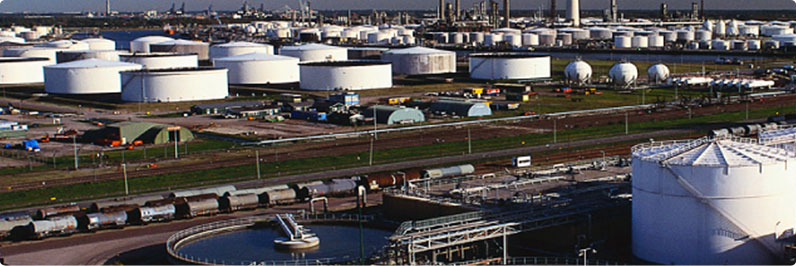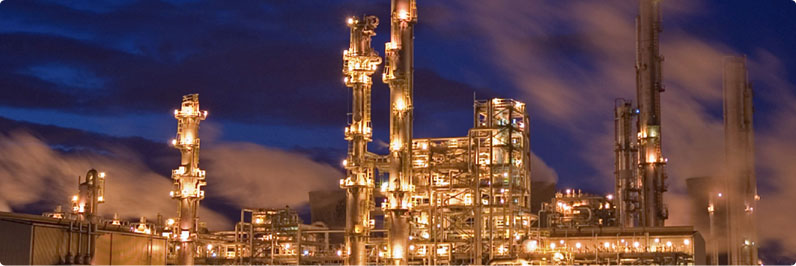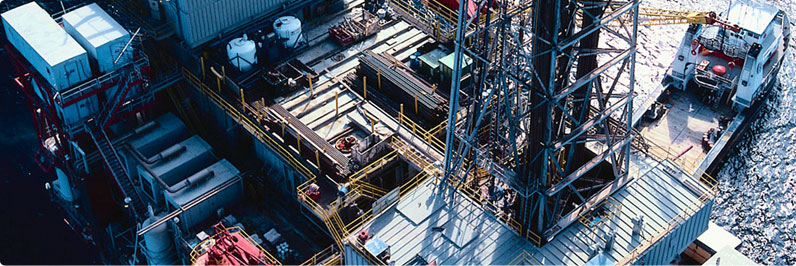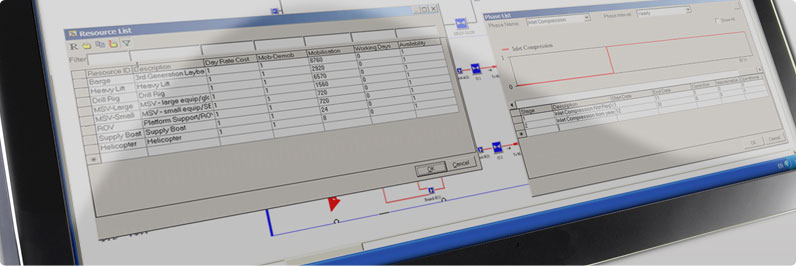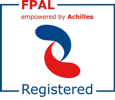Case Studies
Case 1: Compression Study
A major gas project in Central Algeria will develop seven (7) gas fields in two phases.
Objectives:
The objective of this study was to evaluate the annual production availability of two gas compression design options. One option evaluated a configuration with a second CPF, whilst the second option transferred all fluids to the existing facility.
The following diagrams show the PLASMA screens for the two options:

Option 1

Option 2
Summary Of Results:
The results indicate that the Production Availability for option 1 is by far better than option 2. The main difference is between years 2013 and 2022 when there is some spare compressor capacity for option 1. The improved availability figure is as much as 10% in 2016.

Summary of Results for Overall Production Availability
Back to Top
Case 2: Onshore processing Facility
This study is based upon the design of an onshore oil processing facility. The key systems are Separation Trains, Gas Compression, Water Injection and Power Generation.
Objectives:
The main objectives of the RAM analysis are the following:
- Quantify the expected performance of the Base Case design over its field life and identify the equipment/systems likely to be critical to the operation. The Base Case configuration includes full sparing on the electric motor driven gas compression (3x50%) and gas turbine driven power generation (3x50%) systems.
- Evaluate performance of alternative configurations for the power generation, compression, separation and water injection subsystems.
Analysis:
The analysis predicts the average oil production efficiency for the Base Case over the first 10 years of its venture life of 98.2% +/- 0.1%. The key contributors to the 1.8% efficiency losses are illustrated in Figure 1 below:

Figure 1: Base Case Subsystem Criticality
The losses associated with the compression and power generation systems in the Base Case configuration are relatively small as a result of the full sparing employed for these systems.
The subsequent sensitivity analysis evaluated the impact of varying sparing configurations and equipment types on the overall system performance. The key conclusions from this sensitivity analysis are discussed below:
Conclusions:
If the sparing on the compression system is removed, the overall performance is affected significantly:
- For the considered un-spared EM driven centrifugal compressor options (2x50%, 1x100%) the average production efficiency reduces by between 0.9 - 1.3% from the base case value as a result of downtime associated with the un-spared compressor units.
- For the considered un-spared GT driven centrifugal compressors options (2x50%, 1x100%), as a result of the additional gas turbine driver losses, the base case efficiency reduces by 2.2% for the 2x50% option and by 3.6% for the 1x100% option. This additional loss is caused by a combination of scheduled and unscheduled gas turbine driver outages.
The analysis also evaluated the impact of replacing the centrifugal compressors by reciprocating units. All the considered configurations for reciprocating compressors include full sparing (3x50%, 4x33%, and 2x100%). For all these configurations the production efficiency reduces slightly by between 0.3 - 0.5%. This can be attributed the high downtime for each of the individual reciprocating units (up to 400 hours per annum) and the resulting higher probability of simultaneous outages.
The performance of the power generation configuration with fully spared generators (4x33%, 2x100%) is practically unchanged from the base case performance. The un-spared 2x50% configuration, however, experiences a 2.3% reduction in production efficiency.
The base case model assumes that water injection outages have no immediate impact on oil production and will therefore not result in production losses. In order to assess the performance of the water injection individually, a separate water injection model was constructed. The considered fully spared water injection configurations (2x100%, 3x50%) have a predicted injection efficiency of 98.4% to 98.6%. If the sparing is removed in the water injection system (2x50%, 1x100%), the efficiency is reduced by between approximately 0.8%
Back to Top
Case 3: Compressor Driver Selection Study
Objectives:
The objective of this RAM study was to support an evaluation of whether an NGL plant should utilise an all-electric system for the major rotating equipment, or a combined electric and gas turbine driver scheme. The target production availability was 95% taking into consideration both scheduled and unscheduled down-time.
The following systems for the driver selection study were included in the RAM analysis:
- Feed Gas Compression System;
- Residue Gas Compression System; and
- Main Power Generation System.
The analysis also includes the impact of the spurious ESD trips and plant shut-down for the Gas Turbine Cases.
General Design Requirements:
The following planned activities for the Gas Turbines have been included in the RAM model:
- Major overhauls every 25,000 - 30,000 hrs;
- Boroscope inspection every 8,000 hrs;
- Water-wash (offline) every 3 months;
- Annual spurious trips with 2 hour ramp-up;
Typical Reliability Block Diagrams used in PLASMA:

A typical 1x100% EM Drive Inlet Separation & Feed Gas Compression

A Typical 1x100% GT Drive Residue Gas Compression

A Typical 3x50% Main Generator Package
Results and Conclusions:
The results show that the 'All Electric Drives' approach, using electric motor drives for all the major process equipment in combination with a centralized electrical power generation system, is expected to provide a significantly higher plant availability than that expected from a comparable ‘Combined Mechanical/Electric Drives’ scheme using gas turbines as prime movers for the Feed Gas and Residue Gas Compressor services.
The results for the 'Combined Mechanical/Electric Drives' scheme also indicate that, without sparing the Feed Gas and Residue Gas Compressors (Cases 1D, 2D, 3D, 4D & 5D), the target plant availability will not be satisfied, irrespective of whether off-line washing of the mechanical drive gas turbines is incorporated in the analyses or not. Sparing these machines (Cases 1E, 2E, 3E, 4E & 5E) will satisfy the target plant availability and increase the plant availability to a value slightly in excess of that provided by the 'All Electric Drives' scheme.
Summary of Results for Overall Production Availability
Case |
Compressor Driver |
Overall Production |
Systems Availability (%) |
||
|
|
|
Feed Gas |
Residue Gas |
Main |
|
|
|
Compressors |
Compressors |
Generators |
1A |
Variable EM Drive |
95.66 |
99.65 |
99.03 |
99.73 |
1B |
Variable EM Drive |
95.60 |
99.65 |
98.97 |
99.73 |
1C |
Fixed EM Drive |
95.99 |
99.74 |
99.28 |
99.73 |
1D |
Gas Turbine |
92.52 |
98.49 |
96.97 |
99.66 |
1E |
Gas Turbine |
95.28 |
98.52 |
99.84 |
99.66 |
|
|
|
|
|
|
2A |
Variable EM Drive |
96.00 |
|
99.03 |
99.73 |
2B |
Variable EM Drive |
95.94 |
|
98.97 |
99.73 |
2C |
Fixed EM Drive |
96.24 |
|
99.28 |
99.73 |
2D |
Gas Turbine |
93.92 |
|
96.97 |
99.66 |
2E |
Gas Turbine |
96.70 |
|
99.84 |
99.66 |
|
|
|
|
|
|
3A |
Variable EM Drive |
96.06 |
|
99.03 |
99.79 |
3B |
Variable EM Drive |
96.00 |
|
98.97 |
99.79 |
3D |
Gas Turbine |
93.92 |
|
96.97 |
99.66 |
3E |
Gas Turbine |
96.70 |
|
99.84 |
99.66 |
3F |
Variable EM Drive |
96.96 |
|
99.96 |
99.79 |
|
|
|
|
|
|
4A |
Variable EM Drive |
95.80 |
|
98.97 |
99.59 |
4D |
Gas Turbine |
93.75 |
|
96.79 |
99.66 |
4E |
Gas Turbine |
96.76 |
|
99.9 |
99.66 |
|
|
|
|
|
|
5A |
Variable + Fixed EM Drives |
95.97 |
99.65 |
99.28 |
99.79 |
5D |
Gas Turbine |
92.52 |
98.52 |
96.97 |
99.66 |
5E |
Gas Turbine |
95.28 |
98.52 |
99.84 |
99.66 |
++ Overall Production Availability refers to the Base Plant Availability plus Feed Gas Compressors,
Residual Gas Compressors, Main Generators.
Back to Top
Case 4: Subsea Water Injection System
PLASMA has been used to investigate different intervention vessel options and optimum number of spares for a subsea water injection system.
Description
- The Subsea Water Injection development will consist of a twin platform bridge linked system in the Deep Water comprising of a Production Compression Water Injection Utilities (PCWU) platform and a Drilling Utilities Quarters (DUQ) platform. The platform will supply up to 6 dual zone water injection wells and transfer oil and gas through 2 oil and 1 gas export pipelines to existing pipelines.
- The system will also involve pre-investment of minimum facilities to permit possible additional future subsea water injection and production.
- The subsea system will be delivered with a total of three subsea trees per manifold. In order to deliver the promised hydrocarbon production profile, it will be necessary, at least during the early years of water injection, for all three subsea trees on each manifold to be run at their maximum water injection design capacity in order to achieve a water injection rate per manifold approaching 200,000 BWPD. Any shortfall would have an observable impact on production.
- Given a total of three trees per manifold, there will be spare capacity in other parts of the system apart from the subsea trees. The manifold / flowline system will have spare capacity (manifold capacity 260,000 BWPD, or, more precisely put, 130,000 BWPD per 8" flowline feeding the manifold) and also the downhole system will have spare capacity (there are two downhole zones per well and each has a capacity of 40,000 BWPD). The subsea system bottleneck will be the maximum water injection design capacity of each tree.
- Water Injection has a direct impact on production rate and reserves, to the extent that every incremental 2.0 bbl of early injected water increases reserves by 1.0 bbl of oil. It is essential, therefore, that the availability of the water injection is maintained at all times, hence the system architecture must be selected to provide maximum availability and minimise risk of downtime.

Diagram
Conclusions:
The availability model indicated that the production availability of the subsea water injection system was predominantly influenced by the intervention vessel mobilisation delay and the number of spare SCMs.
- It was recommended that an operational commitment to be obtained to an ROV Support Vessel availability of 31 days throughout field life. This amounted to an upgrade in the system availability of +3%;
- It was recommended that an operational commitment be explored with respect to achieving a MODU Support availability of 91 days throughout field life. This exercise amounts simply to the performance of a cost analysis to weigh in the balance whether or not it is economically attractive to enter into such a commitment with the prize in mind of achieving an upgrade in system availability of +4.2%.
- It was recommended as a minimum to store in-country the following equipment, maintained in a "ready-for-use" condition:
- A 600M long section of Spare 8" Subsea Flexible Flowline plus four Spare End Fitting Flanges suitable for offshore termination
- A 900M long section of Spare Subsea Control Umbilical plus two Offshore Re-termination Kits
- Four Spare SCM's plus all necessary test stands
- Three Spare Subsea Choke Inserts
This amounted to an upgrade in the system availability of +2.7%.
Back to Top
Case 5: Line-pack
PLASMA has been used to investigate impact of line pack on availability for a number of consumers.
Description
An Eastern Siberian Gasification Project development strategy involves a gas pipeline from a Central Processing Facility (CPF) to a number of consumers. The gas pipeline from CPF to the first consumer will be 120 km long and 28” Nominal Pipe Size (NPS), rated at 98 barg. The pipeline from consumer 1 to consumer 2 will be 272 km long and 24” NPS, rated at 98 barg. The pipeline from consumer 2 to consumer 3 will be 271 km long and 24” NPS, rated at 75 barg and so on. At present, up to fifteen customers have been identified. However, it is expected that the total quantity of customers could eventually rise to about 50.
A major customer for the Regional Project is consumer 2, a chemical complex , which is intended to process the entire gas stream, removing ethane, propane and butane for ethylene production, other heavy components and helium. The stripped lean gas, mainly methane, will be returned to the pipeline for delivery to other customers.
Current design unpacking hours and target availability figures for consumers 1 and 2 are shown below:
Consumer |
Target Availability (%) |
Line Unpacking ( Hrs ) |
|
Summer |
Winter |
||
1 |
97 |
37 |
27 |
2 |
97 |
37 |
26 |
The main objective was to evaluate the seasonal gas availability at various take off points with different unpacking hours.
Results:
Figure 7.1 shows the seasonal Gas Availability at two major takeoff points using the current design unpacking hours. The minimum and maximum values refer to winter and summer months respectively. The mid values (blue squares) represent the average availability.
Figure 7.2 shows variation of the availability for various line unpacking cases for consumer 2.

Figure 7-1 Seasonal Gas Availability at Two Major Takeoff Points

Figure 7-2 Variation of Average Availability with Line Unpacking for consumer 2
Conclusions:
The results of the analysis showed that the target availability of 97% can be met.
The ability to unpack was the most important factor to improving the overall availability. The current design based on the unpacking hours, shows that there is no financial benefit in improving the design. It is therefore important to refine and improve the unpacking hours during winter months in order to achieve more accurate and improved availability values.

